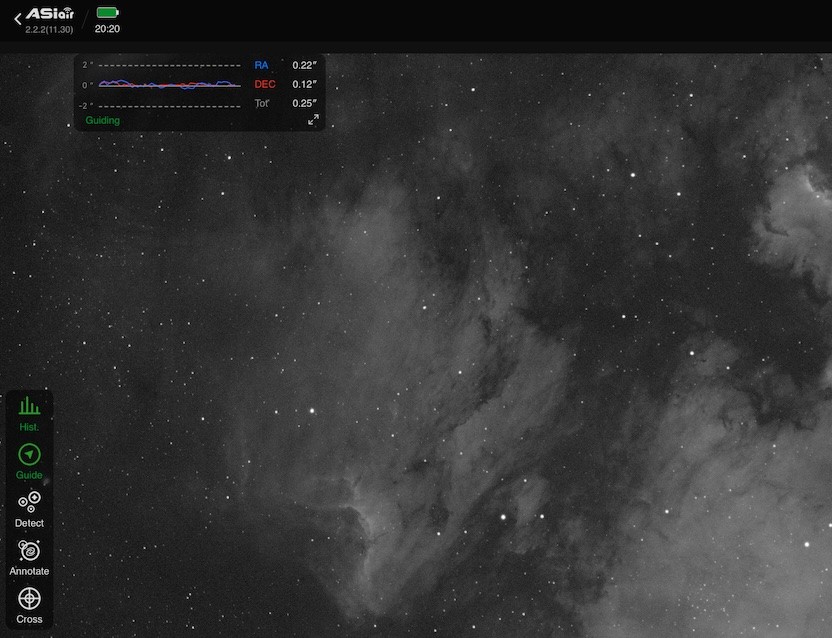The near-IR response of the 678MM together with its pixel size makes it very tempting to use it for near IR guiding.
The reason for going IR guiding is that atmospheric turbulence has a greater effect on the shorter wavelengths (blue and UV) region than with the longer wavelengths (red and IR).
Before you jump at using an IR filter on your refracting guide scope to take advantage, be sure your scope can actually image in the IR without all sorts of aberrations showing up.
In my case, I use an FMA180 pro as a guide scope, and I don't quite trust it to do very aggressive IR guiding.
The compromise I found is to use an Astronomik Pro-planet 642 bandpass filter that passes from about 640 nm and then cut off IR above 840 nm.
https://www.astronomik.com/en/infrarot-passfilter-infrared-pass-filters/proplanet-642-bp-ir-passfilter.html
The bad aberrations from the refractor above 850 nm are therefore no longer an issue.
The passband is 200nm wide. A Luminance filter usually covers 400nm to 700 nm , or about 300nm, so we are also not throwing away that many photons.
But, the filter avoids the dreaded UV and blue regions up to 640 nm.
Does it work? I think so. I do get a 15% type improvement in RMS guide error with ASIAIR autoguiding even from an already good RST-135e guiding. Sometimes, even seeing long periods like this when there is no wind:

In any case, the Astronomik filter has now become a permanent part of my guide setup for a couple of months now.
If autoguiding is limited by the lack of precision of the mount itself, instead of being limited by being able to estimate the centroids of stars that are confused from "seeing," then moving to near IR will not be any help, of course. Nearr IR simply reduces the error cause by atmopheric turbulence.
Chen